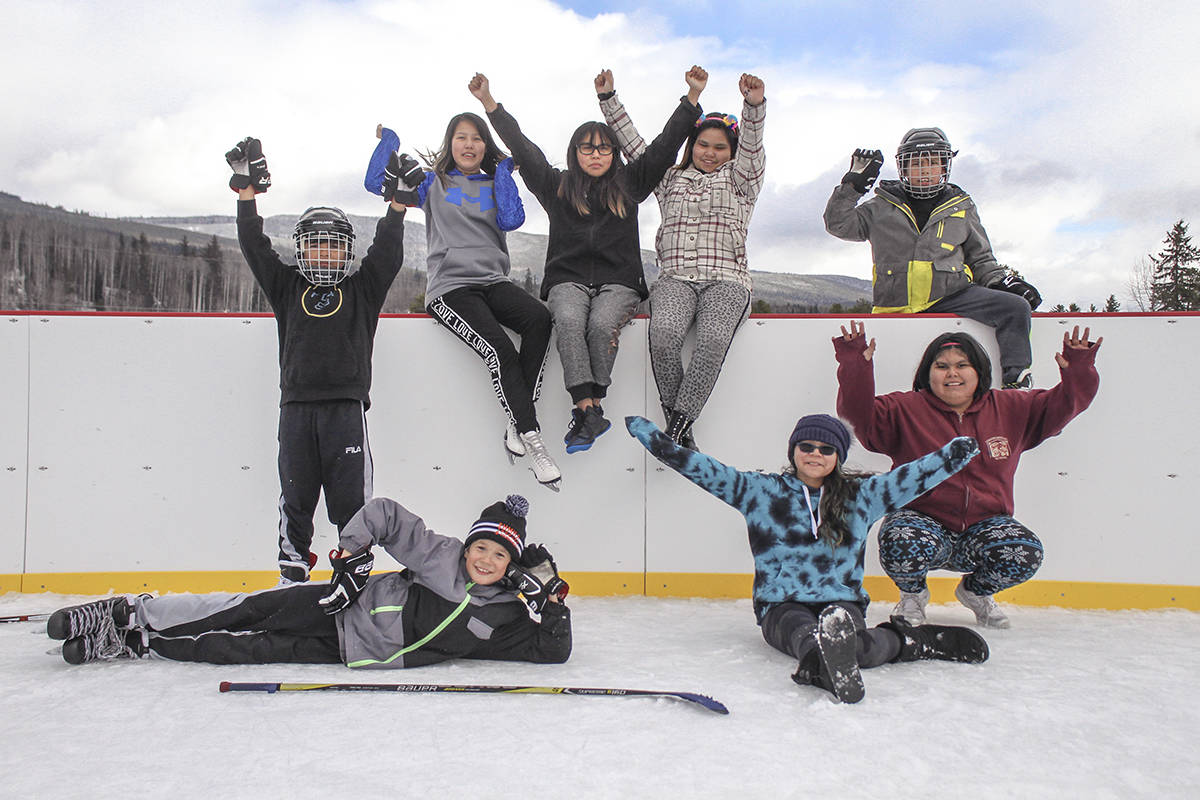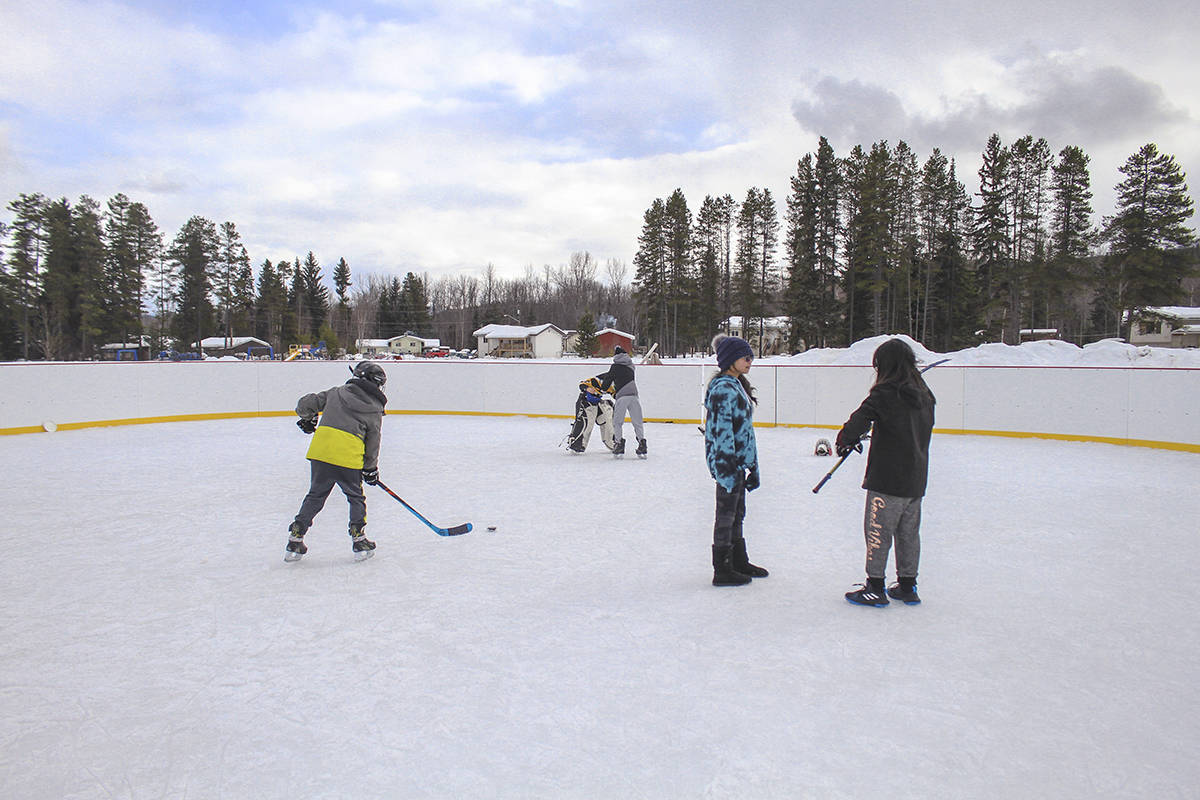For a young First Nations person pursuing a sport, it’s not always as easy as kicking around a ball.
Chief councilor of Gitanyow, Tony Morgan, says there aren’t as many opportunities for youth in their community in comparison to bigger municipalities.
Like with many remote villages, access to simple things like equipment, facilities and coaching can often be an obstacle due to travel costs and location.
But this winter season, Gitanyow had their first-ever skating rink built and he says that it’s made an incredible difference for their people. Located by the elementary school, the rink has become a popular spot for youth of all ages to “hang out” every day.
“The kids are so happy with their rink… A lot of them couldn’t skate before,” he says. “You can really see them watching out and taking care of each other. If one falls down, they’ll throw their hockey stick down and go over to help.”
For many, this is their first year lacing up a pair of skates whereas their only way to learn before was to find a semi-smooth patch of ice on the road while avoiding the ridges and cars.
Morgan says that he believes there’s a lot of talent in his village of approximately 800 people, but a lot of it is never developed if the kids aren’t confident or exposed to exploring it.
For the teenagers, their closest high school is in Hazelton, which is a daily commute of up to two hours on the bus each way. The tiring distance and lack of transportation discourage most from staying for after-school programs or sport, which he says should be an important part of their development and educational journey. By adding these recreational initiatives for Gitanyow, he wants the youth to see potential in themselves and to use these new opportunities to make meaningful friendships.
“There are some who just stayed home and feel like they haven’t accomplished anything in their lives. A lot of these kids were killing themselves or getting into early marriages or relationships because there’s nothing for them to do, they had no visions or dreams so they’d lead a rebel life,” Morgan says. “But now they’re seeing that we’re doing something about this, so I want them to get out there to enjoy it.”
The skating rink cost their village government $150,000, which they were able to make happen from a recreational fund.
READ MORE: Terrace Indigenous skater takes front page of US magazine
When it comes to training in a sport, facilitator of the Aboriginal Coaching Program Dorothy Paul says it’s important for a coach to understand what a First Nations athlete needs to succeed when transitioning into the “mainstream athletic system”, which many might not pursue if there’s an element missing.
“[Coaches need] to have an awareness of looking at our athletes in four dimensions, including the cultural and spiritual,” she says. “Mainstream [also] likes to have systems of play, where athletes perform their skills and understand drills in a particular way. In our systems, we have a specific language that we use… and we play in a particular style which may not be the same.”
The Aboriginal Coaching Module is recognized by the Coaching Association of Canada and has been identified by the Aboriginal Sport Circle as a national priority to ensure First Nations people aren’t left behind from participating in sports. Paul has been running the program since 2000 and travels across the country to teach coaches how to work with First Nations athletes.
She says often times youth get lost in the shuffle with the differences and despite their talent, don’t move up.
Another important factor is family, Paul adds. Since many First Nations’ athletes are coming from a smaller community, their coaches tend to be a relative or someone they know well and it could be difficult to welcome an outsider into their athletic routine. Cultural events are also a priority and she says that coaches should not penalize them for having to take time off to attend it.
For the past 20 years, Paul says she’s delivered this course in the Northwest region approximately 12 times and has seen a positive impact come from it.
“A number of athletes in this area are trying out for the North American Indigenous Games or Team BC,” she says. “[Coaches are now] hearing and listening to what some the athletes are saying when competing, they’re taking more ownership of their sport and development.”
READ MORE: Indigenous athletes honoured at Premier Awards
Back in Gitanyow, Morgan says the kids will often help him maintain the rink and stuck around to play after school.
”I’m skating instead of doing my homework now,” says Ladawna, one of the young girls at the ice rink. “[This is nice] to get away from my siblings and exercise… but it’s melting now, it’s getting slushier.”
Come summertime, their band council is planning to install basketball hoops and eventually a soccer field with some of the leftover recreational funds. Morgan says that some of the youth have asked him for a swimming pool, but that will have to wait for another year due to costs.
“We’re working on making things better for these kids,” he says. “We’re really trying to improve their lives and take care of them.”

